Yet another headphone amplifier ty.ytka
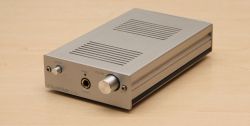 .
.
I hope I don't bore you, with my next headphone amplifier. But somehow it just so happened that I've had the verve for such projects lately.
This headphone amplifier was created to be used with a phone or laptop. Hence my decision to power it from the built-in batteries (for easier and more versatile use), and to only equip it with a USB digital input.
The schematic of my amplifier itself is overwhelmingly taken from the datasheet of the LME49600 chip. This chip is a very interesting buffer, ideally suited to the construction of such a device. It has been enhanced here with a USB DAC realised on the PCM2705 chip, which is easy to apply and works with various operating systems without problems. In addition, the amplifier has a battery charging circuit, as well as a cell balancing circuit. The latter two, are in the form of off-the-shelf modules. I made this decision mainly because these modules were already lying in a drawer, waiting to be used.
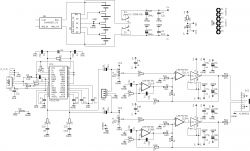 .
.
The circuits used, in terms of supply voltage, can work when powered by two cells connected in series. I, however, chose to power the device from a battery made up of four cells. And why did I choose these cells? Initially, I was thinking of using smaller sized cells, but as 18650 are probably the most popular, their price is more affordable than the smaller ones. Besides, on these, the amplifier can work for a really long time.
Before I go any further IMPORTANT NOTE for possible role models! .
The ground of the charging module, has a different potential than the ground of the amplifier circuit. They cannot be combined!
For this reason, an insulator has been glued into the charging connector hole located on the rear panel, in order to prevent accidental short-circuiting of the grounds when connecting the charger plug.
 .
.
Back to my design. I have designed the following board:
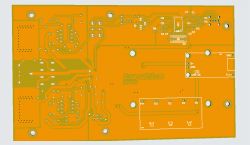
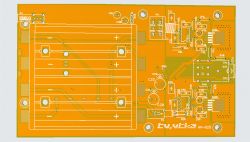 .
.
Which I commissioned from a company (I think) in a known part of the world.
As for the casing. I think you will already recognise it in part. The main part of it is taken from one of my previous projects, which underwent a metamorphosis some time ago and received a new enclosure. So, these I have used here to make useful.
In completing the project on the mechanical side, a few more small components were needed. These include:
 .
.
In order not to bore you with descriptions, hereafter just a few photos taken during the project.
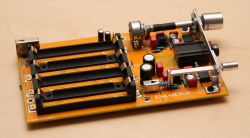 .
.
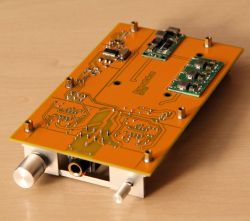 .
.
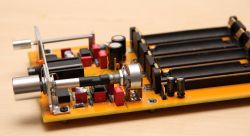 .
.
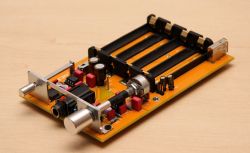 .
.
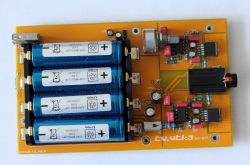 .
.
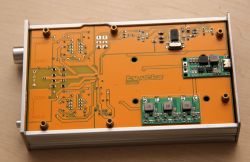 .
.
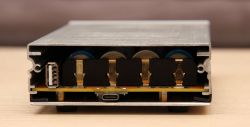 .
.
 .
.
 .
.
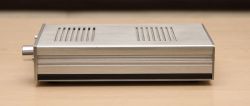
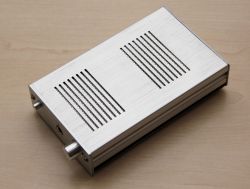 .
.
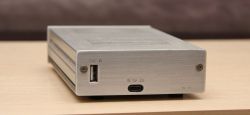 .
.
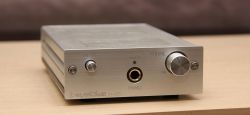 .
.
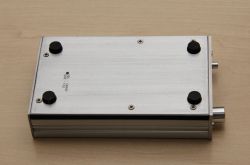 .
.
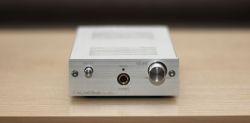 .
.
Below I still include the results of the tests carried out. Looks to the fact that, as in the design of my amplifier in the mains-powered version, the converter block from the PCM2705 affects the measured parameters in a negative way. i will still review this carefully.
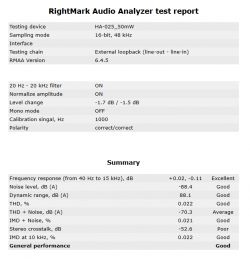 .
.
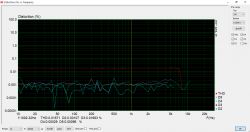 .
.
Greetings and feel free to comment.



Comments
I have read the whole description and looked at the schematic and I still don't know what the circuits on the output are :) . Why USB type A? I don't think this is their typical use (being an "input")... [Read more]
Sorry, the symbol for the output circuits will not appear on the schematic, but they are listed in the description, it is LME49600. And why USB-A? Due to lack of space, I couldn't manage to use a dedicated... [Read more]
I wonder why such poor performance. Over 20 years ago I made a similar circuit, only on a PCM2900 chip. And the parameters were much better, inter-channel transfer -90dB, noise -96dB, which is practically... [Read more]
It is not known how it was measured. I presume some other card of unknown grade. [Read more]
. Just out of curiosity I measured the DAC with the PCM2902. This is what the Behringer UCA222 I own is made on. I did this, the USB input from the UCA222 plugged into the computer, and its analogue... [Read more]
I used to apply Wolfson's WM8776 cubes. Theoretically also with excellent performance. Equally, I encountered the problem of quite high noise levels. The chips were from aliexpress - maybe rejects. [Read more]
Yours I cannot rule out. Maybe, in fact, this is the cause here. [Read more]
Very nice, well made and certainly satisfying, so the purpose of the construction was fully achieved. However, at first glance it seems that, since this is an amplifier for headphones, its dimensions... [Read more]
. What is the point of using an amplifier in such surroundings? The noise from outside nullifies the quality obtained from it. And those who want to cut out the noise use headphones with active noise... [Read more]
. The only, and primary, point is to "shout out" the noise of the vehicle or ship during the journey. Even a 'muted' train inside is in fact loud. The headphones, were the cheapest ones, pressed into... [Read more]
. My experience with these circuits was that good PCB design and manufacture was critical. A circuit with improperly routed ground was able to exhibit noise levels some 20-30 dB higher. And of course... [Read more]
. This is a very bad method because only hearing suffers. When I used to travel on Polish rolling stock I used earplugs and over that earphones. [Read more]
The amplifier looks very good, and the DAC measurements suspiciously poor. Isn't packing batteries into such a simple design an excess of form over substance...? If it were the headphone amplifier itself... [Read more]
The PCM2702 chip, has not been in the TI range for some time now. So it is also more difficult to obtain it. Yes my amplifier, especially with those rather large batteries, may seem like an overdesigned... [Read more]